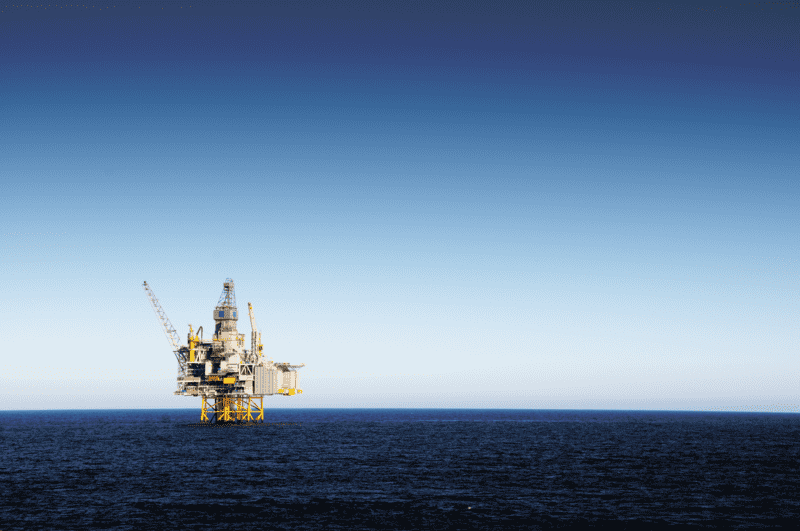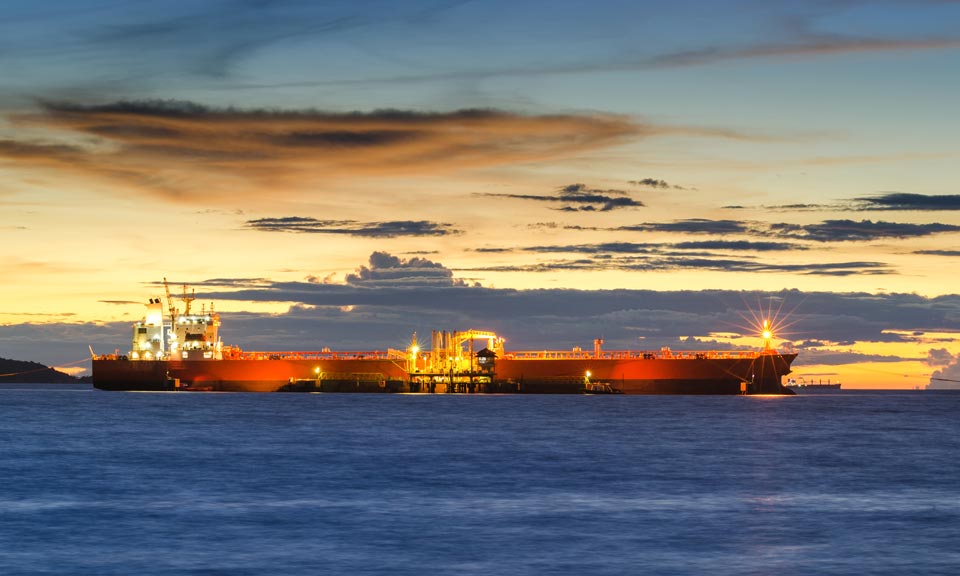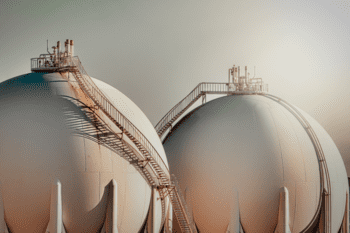Commodities 2024: Global crude supplies seen giving Biden wiggle room on oil sanctions

Global risk factors could shift administration's focus
Increased US oil production has boosted global supplies, which has reduced -- but not eliminated -- the risk from tighter sanctions, said Rachel Ziemba, an adjunct fellow at the Center for a New American Security. "If easy oil conditions persist, in line with sluggish growth, I do think they may make it easier to continue with enforcement," she said.
Oil prices have come down quite a bit and most analysts seem to be concerned with further macro risks, so Washington can risk some sanctions-related disruptions without worrying too much about a price spike, said Fernando Ferreira, director of geopolitical risk service at Rapidan Energy Group. "Current market conditions give the administration more wiggle room to act," Ferreira said.
NYMEX WTI crude prices are ending 2023 down around 5% from year-ago levels as markets eye a global supply overhang in early 2024. Non-OPEC supply growth is set to outpace slowing global demand growth next year, S&P Global Commodity Insights data shows. Even with OPEC+ extending voluntary production cuts into the new year, data shows there still be an implied liquids surplus of 2.2 million b/d in the first quarter.
Global inventories have climbed in the final months of 2023 and builds are expected to accelerate in early 2024, peaking around May with the addition of around 150 million barrels before draws resume, S&P Global data shows.
This budding supply overhang has contributed to the formation of a deep contango structure in crude forward curves. The sixth-month NYMEX WTI contract premium to the front-month widened to around $1.20/b in mid-December, an S&P Global analysis showed, marking the widest contango in that part of the curve since November 2020.
For global oil supplies, other factors like regional conflicts, OPEC+ decisions, the scale of US and Chinese demand, and disruptions of major shipping routes are expected to be more important than sanctions decisions.
While some experts still see leeway for Washington on sanctions, others say risks from these factors will indeed limit the administration's options.
Disruptions in the world's major waterways are affecting shipping prices and insurance prices and have built in a new premium in oil and LNG prices, said Brenda Shaffer, an energy expert at the US Naval Postgraduate School.
Addressing waterway security more directly could add jitters to the global oil price, Shaffer said.
"With this in the background and in an election year, it is not likely that the Biden administration will enforce sanctions and undertake policies that will take oil barrels off the market," she said.
S&P Global Commodities at Sea data shows around 8.25 million b/d of crude and refined products flowed through the Suez Canal from January through November 2023. Of that total, 4.72 million b/d were southbound, including of 2.7 million b/d of crude, and 3.531 million b/d of flows were northbound, including 1.275 million b/d of crude.
Washington's immediate oil sanctions focus is on Russia, said Ferreira. "We expect a significant ramp-up in sanctions enforcement next year," he said.
More enforcement will increase the costs and risks associated with the shadow fleet and funnel more exports through price cap-compliant services, he said.
Ziemba expects enforcement of the price cap to be more targeted, with some additional tankers listed and perhaps some spot checks. Insulating the global economy from shocks will argue against more extensive enforcement, she said.
The US may see lower crude prices as a tailwind for a tighter squeeze on the Russian shadow fleet, according to a Dec. 20 note from Clearview Energy Partners.
"Once Urals moved below the $60/b threshold, cap-compliant trade could offer an outlet for barrels that might otherwise have moved via shadow fleet capacity and Russian middlemen," Clearview said.
Platts assessed FOB Urals Primorsk below $60/b from Dec. 6 to Dec. 12, according to S&P Global Commodity Insights data.
Most experts expect little change in the US enforcement of Iranian oil sanctions.
"I don't think Biden will enforce the sanctions on Iran any more strictly than he has now, unless there is some sort of escalation in the Gaza/Israel conflict in which getting tougher on Iran might make a difference," said Ellen Wald, president of Transversal Consulting.
Ferreira was also skeptical that anything would change. "No one seriously believes this administration is willing to take the type of enforcement actions against Chinese traders, shippers and buyers that would crimp Chinese imports of Iranian oil," he said.
Iran's ties to the Houthis are also complicating matters, said Shaffer.
"Iran knows that it has the Biden administration over a barrel in an election year and is using its proxy – the Houthis – against international shipping in the Red Sea, and its proxies in Syria and Iraq against US forces there, with no fear of American response," she said.
In Venezuela, where the US eased oil and mining sanctions for six months in exchange for progress toward fair elections in 2024, the Biden administration will likely defer to the Venezuelan opposition's assessment of whether Venezuelan President Nicolas Maduro is delivering on his promises, Ferreira said.
"Neither the Biden administration nor the opposition want to undermine the process by prematurely reimposing sanctions, so any changes before April will be symbolic, if they happen at all," Ferreira said. "I suspect we'll roll over the licenses again in April and wait until after the Venezuelan elections to make any adjustments."
The US will likely be flexible in negotiations and wary of reimposing sanctions that could undermine humanitarian issues, Ziemba said. The sanctions pause will likely remain in effect at least until the six months expire, but some areas of sanctions may be reinstated, including potentially those on the gold trade, she said.

News
Eni is to combine its North Sea oil and gas business with upstream independent Ithaca Energy, majority-owned by Israel's Delek, in a deal set to give the Italian company a 37.3% stake in the "satellite" entity, the companies said late April 23. The deal, first publicly mooted in late March, follows quickly on from Eni's acquisition of London-based Neptune Energy in January, which included an operating stake in the UK's highest producing gas field, Cygnus. The combination should result in 2024 production of over 100,000 b/d of oil equivalent, with a roughly equal weighting between oil and gas, and the potential to reach 150,000 boe/d by the early-2030s, the companies said. The deal continues a strategy for Eni of creating "satellite" joint ventures offshore Norway and Angola, although Delek is expected to remain the largest shareholder in this instance, with a 52.7% stake upon completion. The deal excludes Eni's East Irish Sea and carbon capture and storage projects, with the Italian company remaining the primary investor in flagship government-backed CCS project HyNet North West. Ithaca produced just over 70,000 boe/d in 2023, of which 66% was oil, and had warned its production from the current business would drop to 56,000-61,000 boe/d this year, reflecting the cancellation of several new projects due to the UK tax regime. It has struggled to make headway with the major West of Shetland Cambo oil project -- previously the target of environmental protests -- after entering the project in April 2022 with the purchase of Siccar Point Energy. Eni had production of around 50,000 boe/d offshore the UK in 2023. "The Satellite Model is a strategic response to the challenges and opportunities of energy markets, creating focused and lean companies able to attract new capital to create value through operating and financial synergies and the acceleration of growth," Eni said. "The combination will allow Eni to continue pursuing its successful growth on the UK continental shelf, thereby strengthening its commitment to the UK." Ithaca Executive Chairman Gilad Myerson said: "The synergistic combination with Eni's highly cash-generative UK continental shelf portfolio has the ability to unlock our long-life organic growth opportunities, creating a combined entity with substantial scale and longevity." Expanded asset base The combined entity will have reserves and contingent resources of some 658 million barrels of oil equivalent, including stakes in 37 producing assets, among them six of the UK's 10 largest fields -- Rosebank, Cambo, Schiehallion, the Mariner area, the Elgin-Franklin complex and the J-Area, the companies said. Ithaca already held stakes in Elgin-Franklin and the J-Area, which are thus increased by the combination. Elgin-Franklin, operated by TotalEnergies, is a significant contributor of both gas to the UK and liquids sold under the Forties crude brand, while the J-Area, operated by Harbour Energy, contributes to Ekofisk crude loadings; Forties and Ekofisk are key grades in the Platts Dated Brent price assessment process. Platts is part of S&P Global Commodity Insights. Ithaca is also Equinor's partner in the Rosebank oil project under development in the West of Shetland area, which has similarities to Cambo, while the Equinor-led Mariner field contributes UK heavy crude oil. The combination entails issuing to Eni new Ithaca shares equivalent to 38.5% of the enlarged entity, with Delek selling 3% of the enlarged share capital to ensure 10% or more remains in public hands on the London Stock Exchange. Dated Brent was assessed at $88.73/b on April 23, up $1.18 on the day, while the month-ahead UK NBP gas contract was assessed by Platts at 71.35 p/th.

News
Russia, one of the world’s largest oil suppliers, has increasingly turned to non-Western firms to transport its crude to overseas buyers during its ongoing war with Ukraine . With a dual goal of undermining Russia’s war chest without creating significant disruptions to global supplies amid inflation pressure, G7 countries and their allies have banned tanker operators, insurers and other services firms from facilitating seaborne Russian crude exports unless the barrels are sold for no more than $60/b. The price cap regime, which came into force Dec. 5, 2022, does not directly cover tankers flagged, owned and operated by companies outside the G7, the EU, Australia, Switzerland and Norway, and not insured by Western protection and indemnity clubs. While such ships tend to be older and less maintained, their share in Russia’s crude exports market has been rising in recent months amid strengthening prices of Urals -- the OPEC+ member’s flagship crude grade -- and tightening sanctions enforcement by the West. Non-price-capped tankers have a larger market share in shipping Russia’s Pacific crude exports, according to analysis of S&P Global Commodities at Sea and Maritime Intelligence Risk Suite data. Crudes such as Sokol, Sakhalin Blend, and Eastern Siberia–Pacific Ocean grades are more often involved in these trades than Russian barrels from Baltic or Black Sea ports like Urals. Tanker operators in Greece, Europe’s top shipowning nation, managed to keep their traditionally strong market position in Russia in the first few months since the price cap took effect before giving ways to their peers in the UAE, Russia, China and Hong Kong. (Latest update: April 5, 2024)

News
Recording changes to Russian oil exports and EU oil imports since the war in Ukraine Russia’s war in Ukraine has triggered a major upheaval in the global oil markets, forcing Moscow to find alternative buyers and Europe to source new supplies as Western sanctions seek to clamp down on Moscow’s vital oil revenues. With an EU embargo and the G7 price cap on Moscow's oil now fully in place, Russian seaborne crude exports have remained largely resilient as displaced volumes of its discounted oil flow East. Russian oil product exports have also mostly held up with new buyers in Africa absorbing Russian diesel and other fuels now banned from Europe. (Latest update: April 3, 2024)

News
Initiative driven by demand for batteries from vehicles, energy storage IOC aims to be carbon-free by 2046 Tie-up comes as India supports NEV buildup Japan's Panasonic Energy and state-run Indian Oil Corp aim to finalize details for a joint-venture to manufacture cylindrical lithium-ion batteries in India as early as June to September, the Japanese battery maker said April 1. Both companies will engage in "a feasibility study regarding the utilization of battery technology to facilitate the transition to clean energy in India," Panasonic said, and have signed a binding term sheet with details to emerge "by the summer of this year." The initiative by the companies "is driven by the anticipated expansion of demand for batteries for two- and three-wheel vehicles and energy storage systems in the Indian market", it said. The collaboration comes as India takes steps to build up infrastructure for manufacturing and supporting new energy vehicles, especially in its interim budget for 2024-25. Following the budget announcement, Chinese automaker SAIC Motor and India's JSW Group plan to install a production capacity of 200,000 vehicles/year in India, focusing on NEVs, with ramping up to start from the end of 2024. In China, NEV is a term used to designate automobiles that are fully or predominantly powered by electricity and include battery electric vehicles as well as plug-in hybrid EVs and fuel cell EVs. IOC's tie-up with Panasonic will support the energy company's goals to be a zero-carbon emitter by 2046. India's lithium-ion battery manufacturing industry is expected to grow at a compound annual growth rate of 50% from 20 GWh in 2022 to 220 GWh by 2030, data from the India Brand Equity Foundation showed. Platts assessed prices for battery grade lithium carbonate at $14,350/mt CIF North Asia March 28, flat from the previous session, S&P Global Commodity Insights data showed, while lithium hydroxide stood at $14,000/mt CIF North Asia, also unchanged from the session before. Platts Connect: News & Insights (spglobal.com)